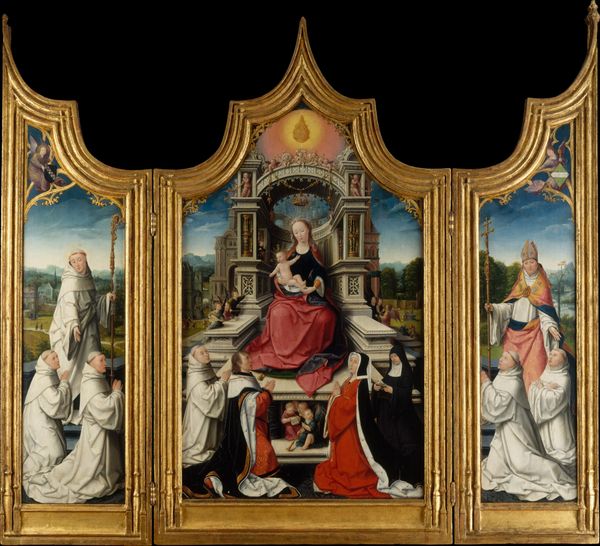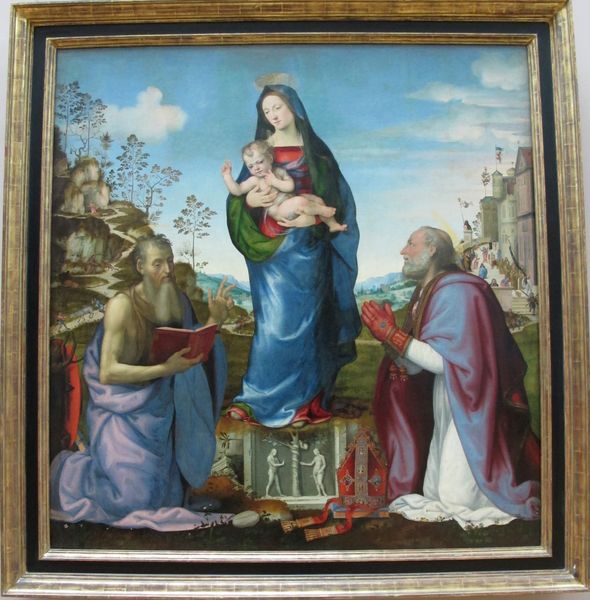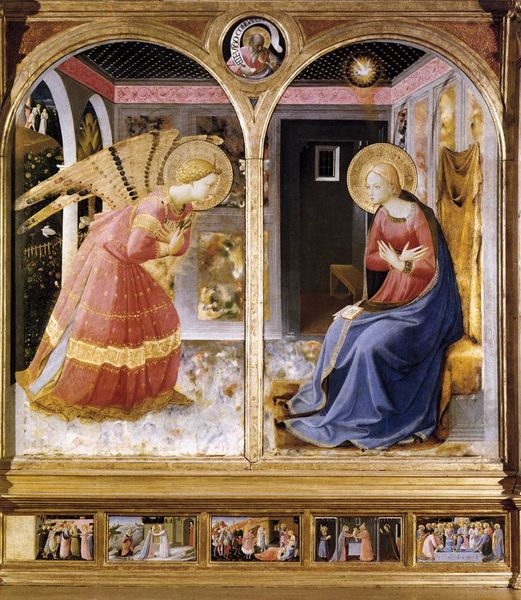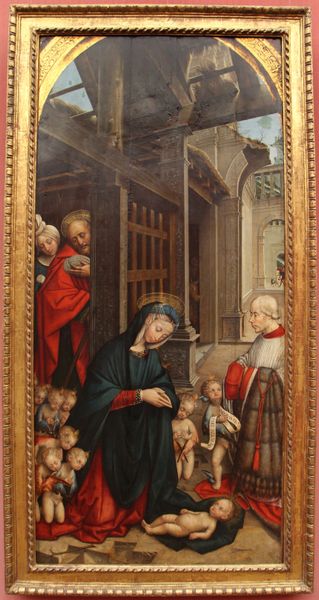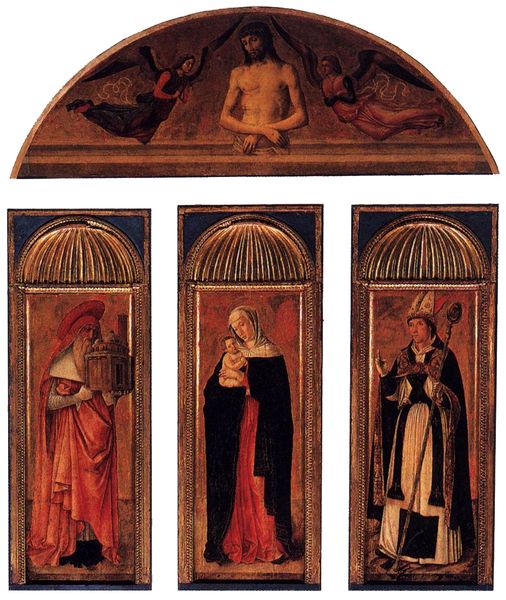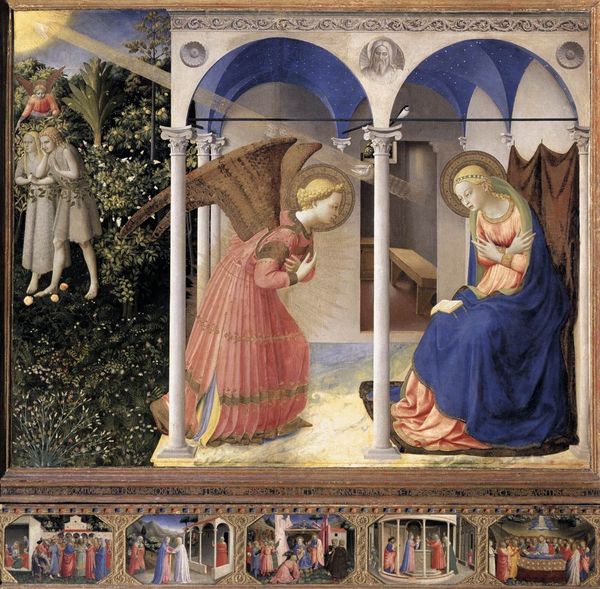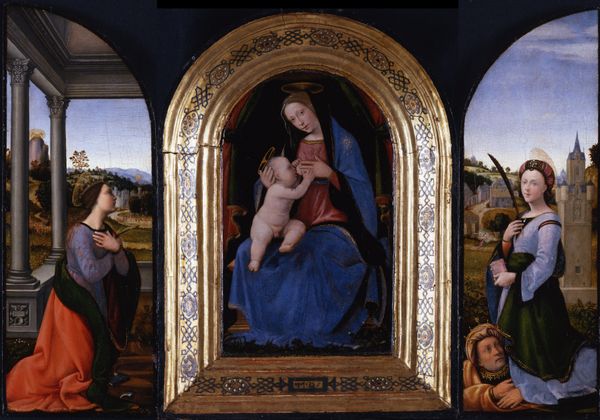
Virgin and Child, The Annunciation to Joachim, and The Meeting at the Golden Gate c. 1493 - 1494
0:00
0:00
tempera, painting
#
woman
#
tempera
#
painting
#
landscape
#
11_renaissance
#
traditional architecture
#
child
#
12_15th-century
#
history-painting
#
italian-renaissance
#
early-renaissance
#
angel
Copyright: Städelsches Kunstinstitut
Editor: Here we have Macrino d'Alba’s “Virgin and Child, The Annunciation to Joachim, and The Meeting at the Golden Gate,” a tempera painting dating to about 1493-1494. It feels so structured with its three distinct panels and gilded frame, almost like a manuscript brought to life. What is your take on this altarpiece? Curator: What immediately strikes me is how d'Alba uses the triptych form to frame not just religious scenes but also ideas about family and legitimacy in late 15th-century society. Think about it – the Annunciation to Joachim hints at miraculous birth, the Virgin and Child solidify lineage, and the Meeting at the Golden Gate showcases reunion. Editor: That's fascinating! I hadn’t considered how the arrangement tells a story about authority and the importance of these figures’ relationships. Curator: Precisely. It also reflects the role of art in visually legitimizing religious narratives for public consumption. Notice how the landscape, despite being idealized, grounds the divine in a relatable earthly space. Do you see any contemporary social values reflected? Editor: Yes, now that you point it out, the emphasis on familial connection could represent a desire for societal stability in a rapidly changing political landscape in Italy at the time. Curator: Exactly. The altarpiece, positioned within the church, reinforced these ideas, becoming an integral part of the social and political fabric. Looking at it this way, we realize it's more than just religious art. It's a reflection of societal norms and power structures. Editor: That has given me a totally new perspective on how art serves these greater institutional roles. Thank you! Curator: Indeed. Considering art in its historical context illuminates its intended impact, allowing for deeper insight.
Comments
stadelmuseum about 2 years ago
⋮
Early Italian altarpieces had consisted of a large number of individual, rigidly joined panels. Each normally depicting only a single saint, they were arranged according to the relative status of those subjects. Only in the second half of the fifteenth century did the separately framed panels come to be linked by a depiction of the ground or background continuing from one to the next. Macrino d’Alba’s tripartite retable – featuring the enthroned Virgin with a scene from the story of Joachim and Anna on either side – adheres to this more modern scheme.
Join the conversation
Join millions of artists and users on Artera today and experience the ultimate creative platform.
